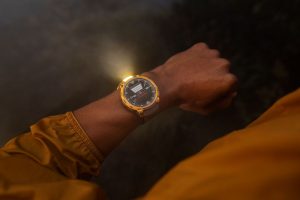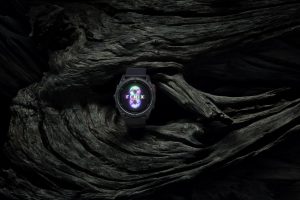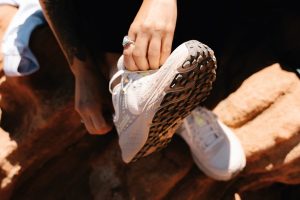When we first heard of the name “Long Banga”, our mind prompted with lots of question marks. We were then being told that we are invited to the mysteriously exquisite land of Long Banga by Friends of Borneo, our hearts were pumping fast with excitement and anticipation.
The purpose of the visit was to spread awareness of the uniqueness of Long Banga with hope that it could mark a revival for their tourism activity. The ultimate goal, other than to lift up the tourism industry there and improving lives of the Long Banga people, was to subsequently save the villages from robust deforestation and development.

As a bunch of nature enthusiasts and thrill seekers, we couldn’t keep the joy to ourselves once we knew that we were going to Long Banga. We must admit that initially, while we had heard the name of the place before, it was virtually unknown to our imagination. The thing that we were certain of would only be the geographical side of the place. But how does the place look like? How’s the weather? Do the people there possess the same friendliness as our other friends from Sarawak?
We tried to research the place online but as expected, there wasn’t too many information about Long Banga available. The best bet was that you go there by yourself at least once to get the clear picture of it, which was just what we were about to do. Once our The North Face Terra 35 bags were packed with The North Face hiking gears, we were raring to go and this, mind you, was not an ordinary trip; we were going to the place where there wasn’t too many commercialization going around. An authentic beauty that we knew not too many people went there before.

The trip
We took the usual flight to Miri for about 2 hours and 15 minutes. We got there pretty early as there’ll be another flight straight to Long Banga. Geographically, Long Banga is located around 600 kilometres east-north-east of the state capital Kuching. We were informed that there are two ways for us to get there; by MASWing or by car which would take 8 to 10 hours depending on the road condition.
We arrived on Friday and our flight to Long Banga was scheduled in the next morning. It was just a tiny MASWing plane with not more than 15 passenger seats, and it will take over 1 hour and 50 minutes to get there via Marudi. So first, a 15 minutes journey before we stopped at Marudi to pick up other passengers and then only we could resume straight to Long Banga. But in our case today, our journey was literally marred with unpredictable challenges.

It was a smooth flight to Marudi and we thought the rest of it would be good, if not better. Once we landed in Marudi, the pilot announced that we had 10 minutes before we flew again straight to Long Banga. But there’s a technical problem as per the pilot, and we were not able to fly for at least one hour, waiting for the issues to be solved. The devastated us tried to calm ourselves down and decided to head to the town for some Marudian breakfast. The town was just 5 minutes’ walk away from the airport, which was fair enough.
We decided to take our plane woes off our head for a while and it looked promising as we found out there’s one famous char kuey tiow stall there. Once again, devastation hit us hard when we learnt that the stall was closing soon. We tried to talk the stall auntie through and after learning that we came from afar, she agreed to have us as her last customers. Few char kuey tiow plates and some fruits (we had from a store nearby) later, we headed back to the airport again.

We finally came to the third bad news in a row; the plane was not fit to fly to Long Banga. That was like the game-changer to all of us; we anticipated our foot to set the Long Banga soil that morning. Now, we were sad that it’s not going to happen, at least not today. We were told that we’re going to head back to Miri, spend a night there and start another journey the next day. At that time, all that we could do was to keep the positivity high and keep our heads cool. Well maybe, just maybe, this stormy introduction to the trip would only unleash rainbows afterwards. Who knows? We could hope and we could certainly pray for it to turn into reality.

We were grateful that the next day, our trip to Long Banga wasn’t interrupted by any bad luck. It was smooth and once we landed in the tiny Long Banga airport, we were so relieved. The airport did catch our attention though. Not only that it has got the frame of a big, 80s countryside feel to it, the runaway was pretty short and small too! We swear it was the shortest runaway we ever encountered in our lives and it is the shortest airport runway in Malaysia.

The environment
We walked our way (through the airport’s runway, even) to our homestay. It’s about a 200 meters walk; they’ve already waited for us there, the whole family. The house owner gave us a very warm welcome and we were pleased to be greeted with some refreshing coconut water. Straightaway, we were invited for lunch and the food were nothing short than amazing. Another information worth noting was that the food here are all fresh; the vegies are plucked from the garden next door, and the fishes that we had were caught just the morning before.

It was a nice house first and foremost and other than the green landscapes, we noticed that it was majorly surrounded by fruit orchards – and many types of them too! The highlight was the durian though. The ‘King of all Fruits’ might be exclusive here but there are loads of them there. If you want to eat it, you just eat it and it was absolutely mental! We had durian from morning till night, so we couldn’t quite complain could we?

Long Banga community benefited from the one and only clinic, opened up by the government. The clinic was opened with the purpose of giving attention to the health of the people in Long Banga. The tiny, almost looking like a traditional house with white paint however could only serve the people with not-too-serious injuries or illness. For the more serious ones, including giving birth, patients would usually be taken to Miri Hospital.

As rice production got its centre stage as the most influential economic activity in here, you can’t help but see a lot of paddy huts around here with the main purpose of storing their rice. A thing worth noting here is the four to five feet tall house could only be climbed up with portable staircase, as they purposely remove it to prevent rats from getting inside the store room. In fact, the pillars would be coated with tiles for more slippery surface so that it’d be impossible for the rats to climb through.

The Hike
Geared up with our The North Face Borod Full Zip technical stretch fleece jacket and The North Face CNY Apex breathable and extremely comfortable pants with The North Face Venture Fastpack II GTX waterproof Gore-Tex® technology hiking shoes, we hiked to one of the nearest tracks with the help of the local guides and it was relatively great. Even for beginners, we’d say that it is a good place to hike, not too challenging but still you can learn a lot from it. If you’re looking to sharpen your hiking techniques or just simply to get your hike shoes dirty again, the tracks here could be the answer.
It had been raining in Long Banga. The Venture Fastpack II GTX hiking shoes sponsored to us by The North Face were perfect for the wet and slippery hike. Not only lightweight, the Gore-Tex® waterproof shoe helped us scale the slops and provided support to us with the improved Ultra Protect™ CRADLE™ Guide.
Another member of ours was testing the Vasque Breeze III GTX mid cut hiking boots. This all-weather waterproof protection boot is highly breathable and the Vibram Megagrip compound outsole holds every hiking step firmly to the ground.
We hiked for almost an hour and arrived at the highly anticipated Arol Ano Waterfall after a pretty solid hike. The fatigue we felt after such a long journey plus an hour in the jungle suddenly swept away by the breath-taking view of the waterfall. Wearing the right hiking outfits did help in every outdoor adventure. Not only breathable and comfortable, the full zip The North Face Borod jacket and the CNY Apex pants on us were stretchable, and the technology and innovation put in the production of the outfit allowed maximum mobility to us. The jacket and pants were so smart looking that we could even wear them anytime anywhere.

The North Face Millerton jacket we brought with us came in handy when rain started pouring on us. This breathable, water and windproof two-layer outerwear keeps us warm and dry in the inside as we waited for the sky to clear.
It just gets better when we had a little picnic by the waterfall, eating the soy sauce wild boar – cooked traditionally – plus the great ‘Pucuk Paku’ vegetable. Probably one of the best lunch environments we’ve ever experienced, without a shadow of doubt.

Cultures in Long Banga
Little more than 600 people and 100 homes, Long Banga is made up of two villages of the Saban and Kenyah Lepo Keh. Long Banga people possess quite tremendous culture that we can learn from too. Traditionally, they would do works related to their geographic environment. Most of them would end up as paddy field workers too, as the Long Banga land is blessed with grand paddy fields producing quality rice. There are customs and traditions that we can only find in Long Banga too.
- Pregnant women in Long Banga have long held a tradition where they’ll be drawing tattoos all over their bodies during pregnancy. As per the people there, it symbolizes the strength and character of the women, having to go through rough times carrying babies and at the same time going through painful period of getting tattoos carved out on their skins.

- Hunting down for meat – either to take back home and cook them up or to sell them – is a common practice for Long Banga activity. One of the most popular animals in here is wild boar. We were told that wild boars could be easily found here and it would often end up being their lunch/dinner dishes.
- Other than eating up the meat, wild boars could also be useful as the people would keep the tusks, especially the rare ones. The tusks are believed to bless them with good luck and subsequently protecting the owners. By the rare ones, it means that the shape of the tusks must be round in certain manners and if they managed to find that pair of tusks, they’ll keep it as one of their prized belongings.

- Tta (women’s head band) and Kaang Anaak (baby carrier) of the Kenyah Lepo Keh tribe in Long Banga, Sarawak. The Tta is made with fabric and decorative sequins and goat fur. The rattan Kaang Anaak is fitted with a small wooden seat for the baby to sit comfortably. The shape yellowish white decorations on the outside of the Kaang Anaak are tusks of wild boar.

- Laboong, the traditional Kenyah Lepo Keh hat for men. Made with straws, the hat is finished with decorative sequins and a hornbill feather. This hat must be worn with the shades at the front and back of your head.

This trip to Long Banga was an eye opener. Not until we experienced ourselves, little that we know our country does have a lot more beautiful places that have yet to be explored by many. Many more minority and ethnic groups with very rich cultures were not yet known to most of us.







